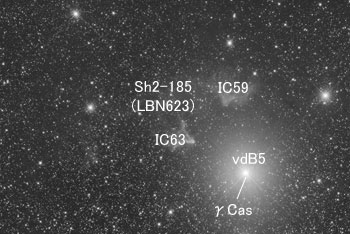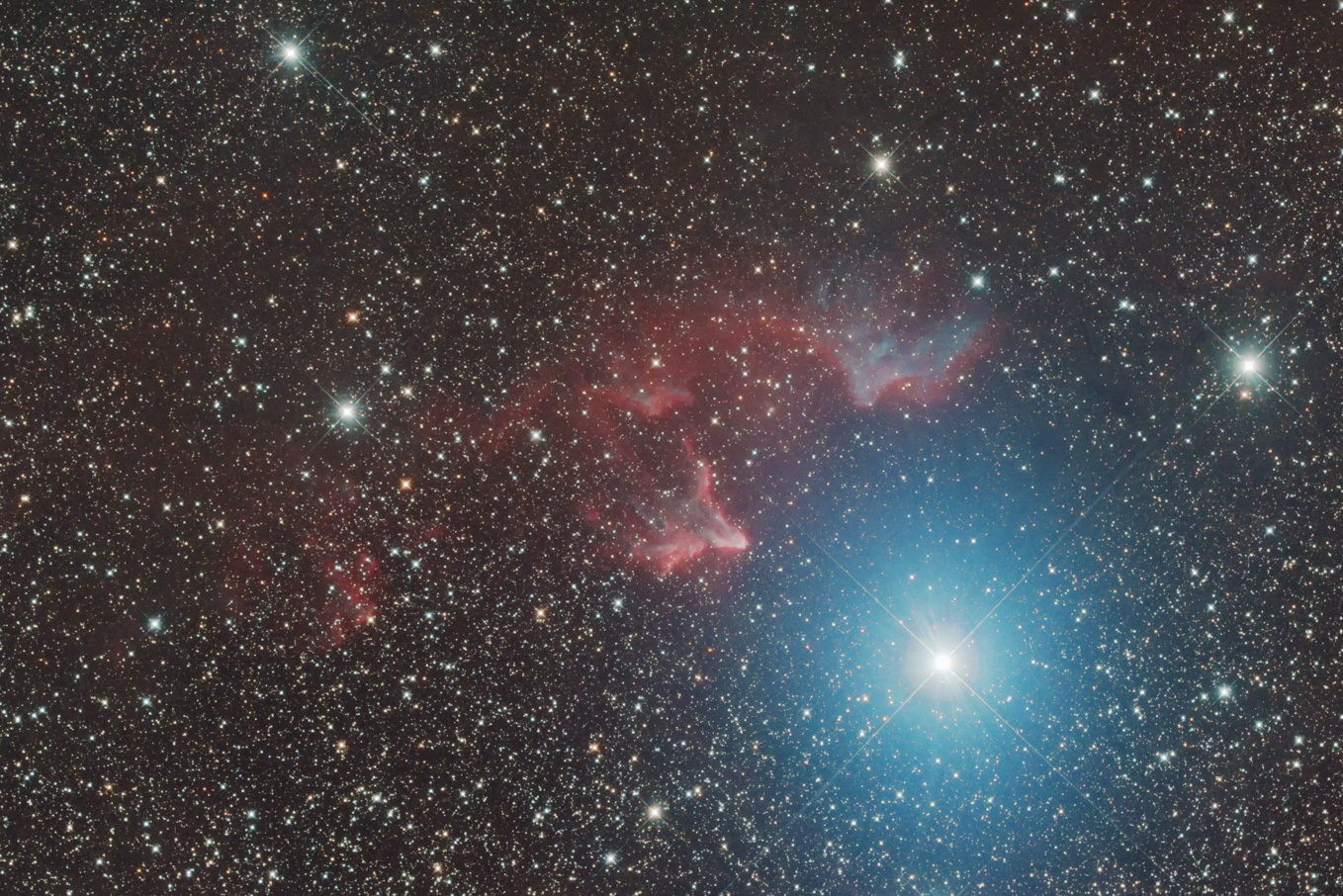| Date & Time: | Oct 21 2023, from 23:18 to 24:30 JST(+0900) |
| Composed 10 shots with 8 minutes exposed |
| Optical: | TAKAHASHI 16cm(6.3") epsilon (f=530mm, F3.3) |
| with LPS-D1 Light-pollution suppression filter |
| Auto-guided with TAKAHASHI JP Equatorial & SBIG STV |
| CMOS Camera: | ZWO ASI2600MC Pro (Cooled temp.: -20°C) |
| Location: | Ooizumi, Hokuto city, Yamanashi pref. |
| IC59 / Reflection Nebula, type 2 E+R |
|---|
| R.A. | 00h 57m 00.0s (2000.0) |
|---|
| Dec. | +61° 08' 30" (2000.0) |
|---|
| Apparent Size | 13.0×6.8' |
|---|
| Real Size | 2.5×1.3 light yrs. |
|---|
| Magnitude | - |
|---|
| Distance | 650 light yrs. |
|---|
| Other IDs | Sh2-185A, LBN 620 |
|---|
|
| IC63 / Reflection Nebula, type 1 E+R |
|---|
| R.A. | 00h 59m 23.0s (2000.0) |
|---|
| Dec. | +60°54' 00" (2000.0) |
|---|
| Apparent Size | 9.0' |
|---|
| Real Size | 1.7 light yrs. |
|---|
| Magnitude | - |
|---|
| Distance | 650 light yrs. |
|---|
| Other IDs | Sh2-185B, LBN 623 |
|---|
|
This picture has captured a star field around γ Cassiopeiae.
The bright star is accompanied by very faint reflection nebulae. Though this nebula is single lump of inter-stellar gaseous matter Sh2-185,
the Index Catalogue has given two numbers of IC59 and IC65 for the north and northeast parts respectively.
Both nebulae has apparent size of about 10 arc minutes and we can detect them only on films with long exposure.
IC63 is brighter than IC59, being M-shaped filament structure.
This image has cropped with an equivalent focal length of 700 mm.
 |
Objects around IC59, IC63 |
|

